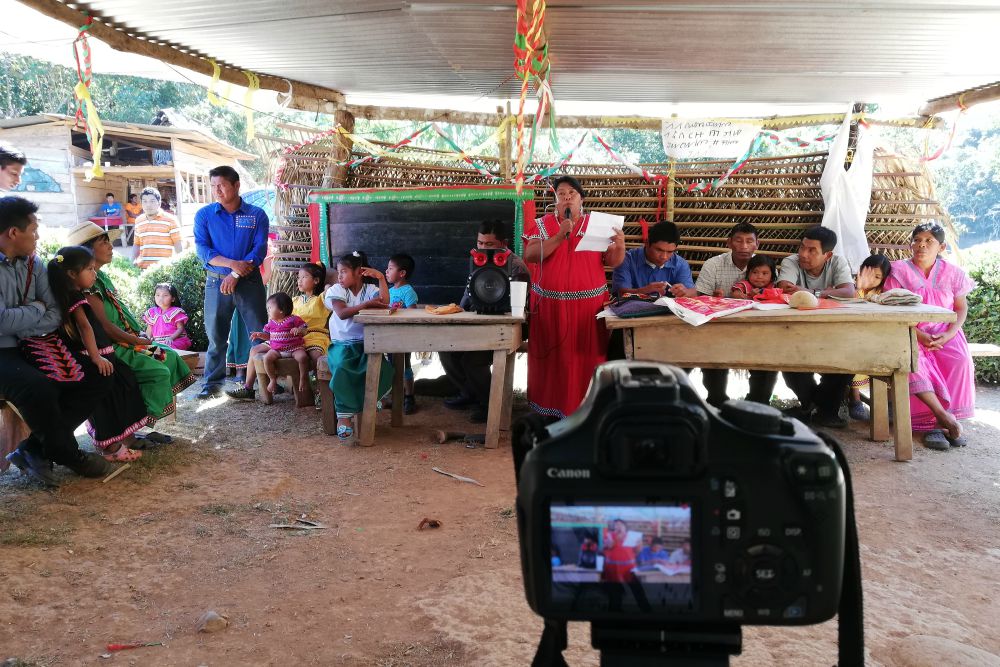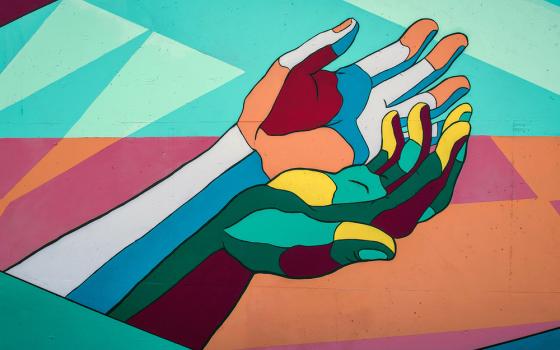
Weni Bagama, Ngäbe leader and member of the affected community of Kiad, presents the agenda of the annual meeting of the organization for the written Ngäbe-Buglé language (OLEN). (Jonathan Quiel González)
A set of mysterious petroglyphs lie at the heart of the indigenous Ngäbe-Buglé religion and written language — and those petroglyphs now lie at the bottom of a stagnant, foul-smelling reservoir.
The flooding caused by the Barro Blanco hydroelectric project nearly three years ago constitutes an ongoing violation of their religious and cultural rights, say Ngäbe-Buglé leaders, in addition to causing widespread damage to orchards, farmland and fishing that the communities depended on for food and livelihood. Sr. Edia "Tita" López of the Sisters of Mercy agrees.
López has accompanied this indigenous group in its struggle for more than a decade, since before the dam was built. She moved to the comarca, or Ngäbe-Buglé territory, in 2010 to join them in their struggle; she was there a year later when construction on the dam began. She was there, too, when thousands of Ngäbe dam opponents marched in the streets in a series of protests that culminated with protester deaths and lasting injuries. And she continued to support the communities in May of 2016, when the company began to fill the reservoir behind the dam, leading to flooding of the communities and weeks of significant and sometimes violent protests.
She watched with dismay as the Panamanian government pushed the dam project through, flooding Kiad and two other riverside communities, their cemetery and ceremonial site included, while causing springs to dry up and other environmental effects. Global Sisters Report chronicled the damage caused by the dam and the community's opposition to it in a series of articles in 2017.




